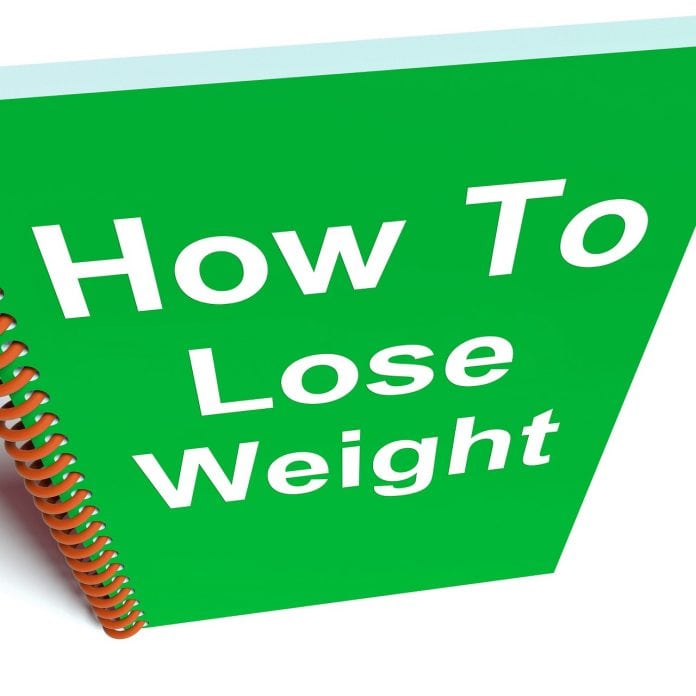
The hardest part about achieving effective but easy weight loss isn’t about knowing what to eat. You have heard it a thousand times: eat lots of vegetables, fruits, whole grains, and lean protein. The real challenge is changing your habits to make those healthy choices part of your everyday routine without feeling too deprived.
When you come home
Where to start? Try a little respect, says Dr. George L. Blackburn, professor of nutrition at Harvard Medical School. “Show respect for the food you’re eating. Before you sit down to dinner, lay out your meal on a white tablecloth, which will make you more likely to eat mindfully,” he says. Mindfulness—the practice of being fully aware of what’s happening within and around you at the moment—seems to help people make better food choices, in terms of both what and how they eat.
It’s also important to respect your hunger, which means you should eat as closely as possible to the time you feel hungry (but not starving). Finally, respect your cravings. “Select foods that taste good to you, because taste is king,” says Dr. Blackburn. You need to stick within healthy parameters, of course, and choose foods that follow the recommendations laid out by the various dietary guidelines. But if you’ve got a hankering for a few French fries or a small brownie once in a while, go ahead. A complete ban of your favorite treats may leave you more likely to abandon your diet altogether and overindulge.
The following are five proven strategies that many people have found helpful toward their goal of lasting but easy weight loss.
1. Make time to prepare healthy meals
Home-cooked food tends to be far lower in calories, fat, salt, and sugar than restaurant food and most processed food. But it takes time and effort to choose recipes, go to the store, and cook. Take a close look at your weekly schedule to see if you can carve out a few hours to devote to meal planning and shopping, which is more than half the battle. It could be on Saturday afternoon or in 15- to 30-minute increments throughout the week.
To save time in the kitchen, take advantage of precut vegetables and cooked whole grains (like brown rice) from the salad bar or freezer case. And stock up on easy, wholesome snacks like fruit, nuts, and low-fat cheese sticks.
- Read more: Three Cookbooks for Healthy Eating 8 to 8
2. Eat slowly
The next time you sit down for a meal, set a timer (maybe the one on your kitchen stove or smartphone) for 20 minutes. That’s about how long it takes the “I’m full” message sent by the gut hormones and stretch receptors in your stomach to reach your brain. If you can spend a full 20 minutes between your first bite and your last, you’ll feel satisfied but not stuffed. Eat too quickly and you’re more likely to overeat. Tips for stretching out your mealtime include chewing each bite a little longer than usual, setting down your fork between each bite, and taking frequent sips of water during your meal.
3. Consume evenly sized meals, beginning with breakfast
 Most people tend to eat a small breakfast (or none at all), a medium-sized lunch, and large dinner. But you may be better off spreading your calories out more evenly throughout the day. For one thing, a small or nonexistent breakfast can leave you ravenous by lunchtime, which may lead you to overeat. A morning meal also helps rev up your metabolism for the day, stimulating enzymes that help you burn fat. What’s more, eating at least 450 calories per meal can help you avoid hunger between meals, says Dr. Blackburn. If you eat a light supper (and avoid grazing late into the night; see tip No. 4), you may eat fewer calories over all—and actually be hungry for breakfast.
Most people tend to eat a small breakfast (or none at all), a medium-sized lunch, and large dinner. But you may be better off spreading your calories out more evenly throughout the day. For one thing, a small or nonexistent breakfast can leave you ravenous by lunchtime, which may lead you to overeat. A morning meal also helps rev up your metabolism for the day, stimulating enzymes that help you burn fat. What’s more, eating at least 450 calories per meal can help you avoid hunger between meals, says Dr. Blackburn. If you eat a light supper (and avoid grazing late into the night; see tip No. 4), you may eat fewer calories over all—and actually be hungry for breakfast.
4. Don’t skimp on sleep
When you burn the midnight oil, you’re probably not also burning calories, but instead consuming too many. Many studies have linked shorter sleep duration with a higher risk of being overweight or obese. A recent review article suggests why: people who sleep fewer than six hours a night tend to have irregular eating habits—including more frequent, smaller, energy-dense, and highly palatable snacks.
- Read more: Poor Sleep May Be Adding to Your Waistline
Only about 60% of adults get the recommended seven to nine hours of shut-eye per night. If you have a hard time falling or staying asleep, cognitive behavioral therapy—not sleeping pills—should be your first step.
- Read more: Eliminate Stress for Sound Sleep
5. Weigh yourself often
 If you don’t already have one, get a digital scale. Hang a calendar and pen above it, right at eye level, as a reminder to record your weight every day. Doing so only takes a few seconds and will keep you heading in the right direction. Most people find it difficult or tedious to track their calories, both from the foods they eat and those they burn via exercise. But a daily weigh-in tells you all you need to know—and the scale doesn’t lie. Also, research shows that people who weigh themselves often are more likely to report easy weigh loss and keep up with the less kilograms.
If you don’t already have one, get a digital scale. Hang a calendar and pen above it, right at eye level, as a reminder to record your weight every day. Doing so only takes a few seconds and will keep you heading in the right direction. Most people find it difficult or tedious to track their calories, both from the foods they eat and those they burn via exercise. But a daily weigh-in tells you all you need to know—and the scale doesn’t lie. Also, research shows that people who weigh themselves often are more likely to report easy weigh loss and keep up with the less kilograms.





































